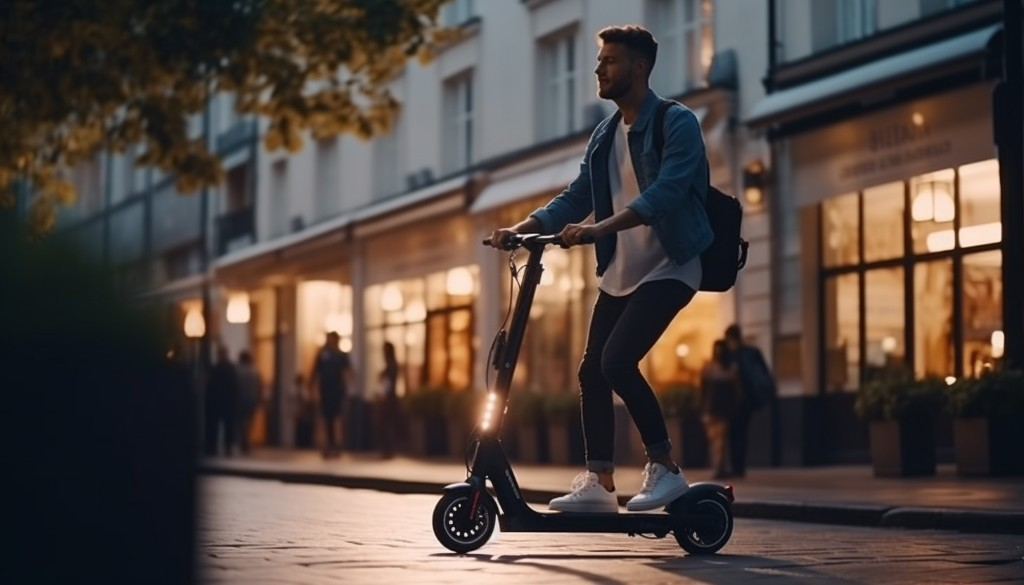Ever contemplated the pivotal role your weight plays when you glide on your electric scooter? Many overlook this crucial factor, assuming all electric scooters are built the same. But in reality, understanding the weight capacity and limitations of your e-scooter can drastically affect its performance and lifespan. Now, let’s unravel this less-explored facet of electric scooters that carries significant importance for every rider.
What we’ll cover
- The Importance of Weight Limits for Electric Scooters
- Elements Influencing the E-Scooter’s Weight Limit
- The Good and the Bad of Heavy-Duty E-Scooters
- The Aftermath of Surpassing the Weight Limit on E-Scooters
- Top-Notch E-Scooters for Heavy Adults
Let’s kick off this ride, and get you all clued up about the weight implications on your electric scooter!
The Importance of Weight Limit for Electric Scooters
Let’s dive right into understanding the weight limit for an electric scooter; a seemingly simple concept that holds paramount importance in maintaining the performance and longevity of your ride. The weight limit for an e-scooter is, quite literally, the maximum weight the scooter can handle without compromising its functionality or safety. Think of it as a bridge’s weight capacity; you wouldn’t want to overload it, right? Similarly, exceeding the weight limit of an electric scooter can lead to numerous adverse effects, such as reduced speed, decreased battery life, or even potential damage to the scooter’s frame and motor.
Just as a runner knows their limits and adjusts their pace accordingly to avoid injuries, you should be aware of your electric scooter’s weight limit. If you think about it, not knowing this could be like taking a leap of faith off a cliff edge – you don’t really know what could happen until it’s too late.

Why Weight Limit Matters to Electric Scooters
Understanding the electric scooter weight limit ensures that your device operates at its optimal performance and provides a safe ride.
When choosing an electric scooter, keep in mind that its weight limit directly impacts the scooter’s performance. Imagine you’re at an amusement park about to get on a roller coaster. The operator tells you the coaster car can take a certain number of people. If you exceed that number, the car might still move, but it won’t reach the same thrilling speeds or take the twists and turns as smoothly. The same applies to your e-scooter; carrying more weight than it’s designed for will reduce its top speed and make it less responsive to controls.
In addition, respecting the electric scooter weight limit ensures rider safety. Overloading the scooter can strain the motor, battery, and other components, potentially leading to sudden malfunctions while riding.
Moreover, consistently exceeding the weight limit can shorten the e-scooter’s lifespan. The extra load places continuous stress on the frame and the motor, wearing them out faster. It might work fine initially, but over time, its performance will degrade, and eventually, it may break down completely.
Adhering to the electric scooter weight limit ensures that your E-Scooter provides a smooth, safe ride and lasts as long as possible. So next time you hop on your electric scooter for a quick trip around town or a fun ride in the park, remember to keep its weight limit in mind. After all, you wouldn’t want your trusty ride to turn into a slow-moving, potentially hazardous vehicle, would you?

Factors Determining the Weight Limit of Electric Scooters
Now that we’ve touched on the importance of understanding the weight limit of an electric scooter, let’s dive into the key factors that determine this. Just like the foundation of a house, the weight limit of an e-scooter is built on a few fundamental elements: battery capacity, motor power, build quality, suspension, and tires.
Battery Capacity and Motor Power: Key Players in Determining Weight Limit
Think of the battery capacity and motor power as the heart and lungs of an electric scooter. They supply the energy and strength required for the scooter to perform.
The battery capacity refers to how much energy can be stored in the scooter’s battery. The larger the battery capacity, the more weight it can carry without draining quickly. It’s akin to a marathon runner’s stamina – more energy storage equates to a longer-lasting performance.
Motor power, on the other hand, is responsible for the e-scooter’s ability to carry heavier loads and navigate steep inclines. Imagine a bodybuilder lifting weights; greater motor power is akin to stronger muscles, capable of carrying heavier loads. When you pair a high-capacity battery with a powerful motor, you’ve got an e-scooter that can comfortably carry heavier riders for longer distances.
Therefore, when shopping for an e-scooter that suits your weight, remember to consider the battery capacity and motor power. These two factors play a significant role in determining the electric scooter weight limit.
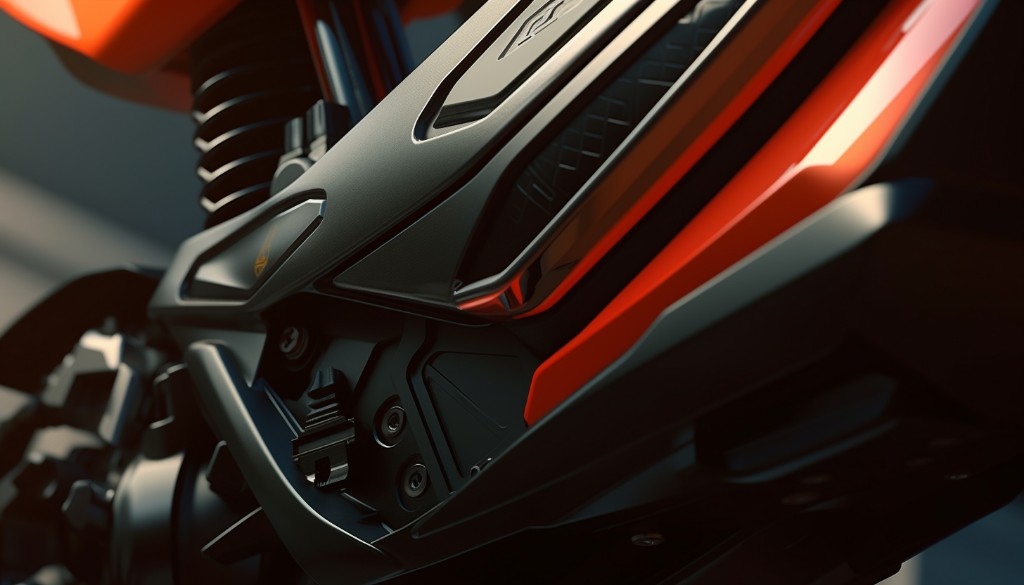
Build, Suspension, and Tires: How They Affect Electric Scooter’s Weight Limit
In addition to battery capacity and motor power, the build quality, suspension, and tires also play vital roles in determining an electric scooter’s weight limit.
The build quality is like the skeletal system of the e-scooter. It needs to be robust enough to support the rider’s weight. Electric scooters made from high-quality materials like aluminum or steel can generally withstand more weight than those made from cheaper materials.
Meanwhile, the suspension acts as the electric scooter’s shock absorbers. A robust suspension system can comfortably handle more weight, reducing the impact of bumps and ensuring a smoother ride, much like the shock absorbers in a car.
Lastly, the tires are the e-scooter’s connection with the ground. They need to be strong and durable to support the weight of the rider and the scooter itself. Tires with good grip also ensure stability and safety, particularly when carrying heavier loads.
So, when considering the electric scooter weight, pay close attention to the build quality, suspension, and tires. These three elements are crucial in determining the scooter weight limit and ensuring a safe and comfortable ride on your e-scooter.
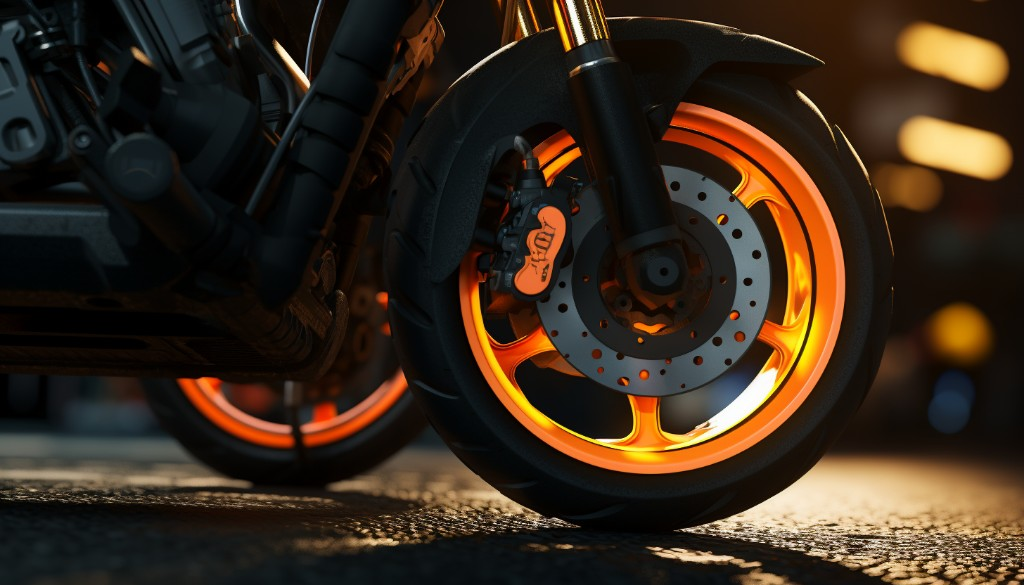
The Pros and Cons of Heavy-Duty Electric Scooters
Having explored the factors that affect an e-scooters weight limit, let’s take a look at some popular electric scooter models and their respective weight capacities.
The Benefits of Heavy-Duty Electric Scooters
Imagine a well-built athlete, muscular and robust, compared to a lightweight sprinter. Both are efficient in their own rights, but when it comes to strength and durability, the heavy-set athlete wins the day. Similarly, heavy-duty electric scooters are the burly athletes of the scooter world. Built with a high weight capacity, these e-scooters for heavy adults are designed to withstand more strain and last longer than their lightweight counterparts.
One significant benefit of heavy-duty electric scooters is their impressive weight capacity. Just like a sturdy bridge that can bear the load of heavy vehicles, these scooters can comfortably carry adults who tip the scales at the heavier end. This makes them a reliable choice for heavy adults who might have been previously worried about exceeding the weight limit on other models.
Furthermore, the robust build of these scooters means they often come with reinforced frames and larger, sturdier wheels. Think of it as trading your compact car for a solid SUV. You get better suspension, more durability, and generally a smoother ride. So, while they may be called heavy-duty, these e-scooters provide a comfortable and secure ride that’s hard to beat.
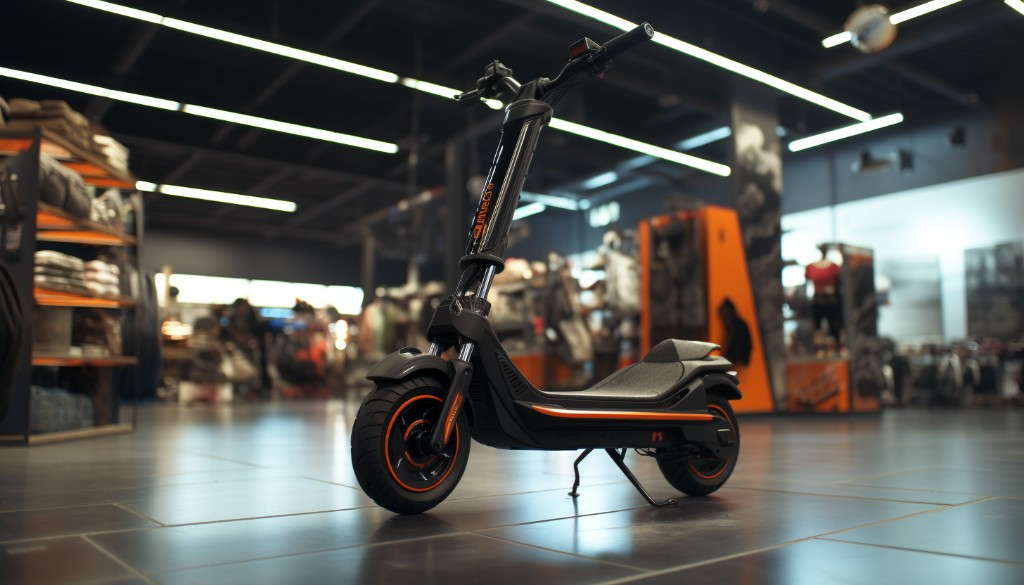
The Drawbacks of Heavy-Duty Electric Scooters
Of course, just as the burly athlete might not be as fast or agile as the lightweight sprinter, heavy-duty electric scooters also have their drawbacks. The most apparent disadvantage is their higher price point. Like opting for a luxury car instead of an economy model, choosing a heavy-duty e-scooter may mean a significant investment. Their robust construction and high weight limit features come at a cost, and this might deter budget-conscious consumers.
Another downside of heavy-duty e-scooters is their reduced portability. Much like trying to maneuver a bulky piece of furniture through a narrow doorway, managing these larger scooters can be a challenge. Their increased weight can make them harder to carry up stairs or load into a car trunk. This can limit their convenience, especially for city dwellers who need to frequently navigate public transportation or tight urban spaces.
Speed is also going to be something to consider. A heavier electric scooter model is going to be slower than a lightweight, sleek design. This is owing to the aerodynamics at play in scooter speed.
Finally, the electric scooter weight itself can affect its performance. Just as a heavy truck uses more fuel than a compact car, a heavy-duty scooter might drain its battery faster than a lightweight model, especially when carrying near its weight limit. This can mean more frequent charging and potentially shorter trips, which could be a disadvantage for those planning to use their scooter for long commutes.
While heavy-duty e-scooters offer significant benefits in terms of durability and weight capacity, potential buyers should also consider the trade-offs. Balancing these pros and cons can help you make an informed decision and find the scooter that best suits your needs.
Consequences of Exceeding the Weight Limit on Electric Scooters
It’s important to note that exceeding the specified weight limit of your electric scooter could have dire consequences for your prized possession. Let’s take a look at some of the implications.
What Happens When You Exceed the Weight Limit on an Electric Scooter?
Picture yourself trying to stuff an oversized turkey into a small oven. The result? Not only does the turkey not cook evenly, but the oven might also sustain damage due to the excessive load. This is similar to what happens when you exceed the weight limit on an e-scooter.
Exceeding the weight limit for an electric scooter can have several serious consequences. For starters, it puts enormous strain on the scooter’s motor, leading to decreased performance. You may notice that your scooter isn’t as zippy as it once was, or it may struggle to climb inclines that it once managed effortlessly.
Also, battery life may diminish drastically. Just like a car that has to lug around excess weight consumes more fuel, an e-scooter carrying more than its designated load drains its battery faster. Consequently, your electric scooter’s range per charge can be significantly reduced.
Furthermore, the structural integrity of your scooter can be compromised. Too much weight can warp the deck or even break it entirely. And let’s not forget the tires – they can wear out quicker, go flat more often, or worse, burst mid-ride, leading to dangerous situations.
Lastly, and perhaps most importantly, riding an overloaded electric scooter can be unsafe. Reduced control and increased braking distances can result in accidents and injuries.
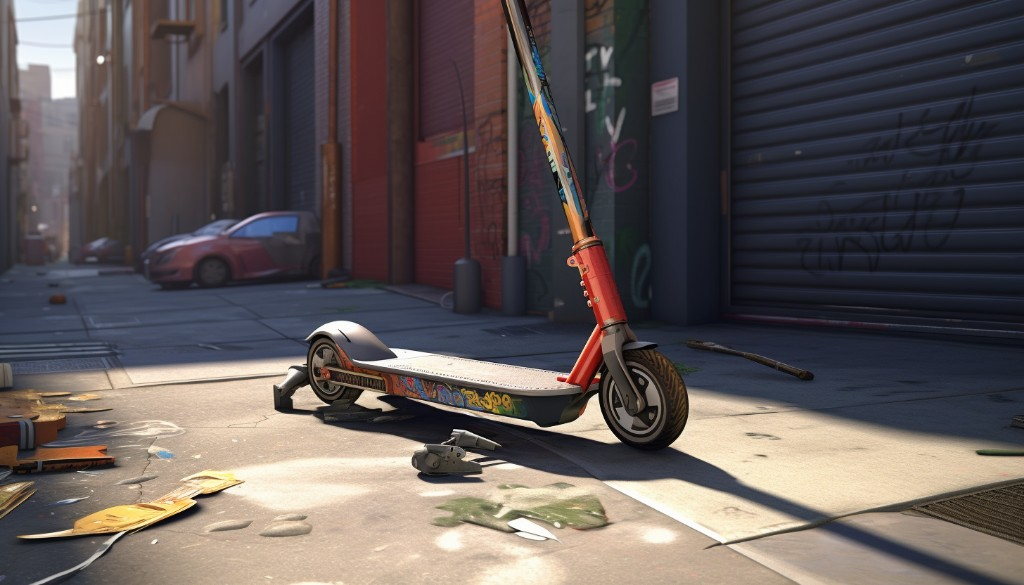
Tips to Avoid Exceeding the Weight Limit on Electric Scooters
So, how do you ensure that you’re not pushing your electric scooter to its breaking point? Here are a few practical tips:
- Know Your Scooter’s Weight Limit: This is the first and most crucial step. Always check the e-scooter weight limit before you buy or ride one. Most manufacturers provide this information in the product manual or on their website. Remember, just like you wouldn’t squeeze into a pair of jeans two sizes too small, don’t attempt to ride an e-scooter that’s not built for your weight.
- Consider Your Cargo: When calculating the load your electric scooter will carry, don’t forget to include the weight of your backpack or any other items you might be carrying.
- Choose the Right Scooter: If you’re heavier than average or plan to carry heavy cargo regularly, consider choosing an e-scooter designed to bear higher loads. These models may be more expensive, but they’re built to withstand more weight and will serve you better in the long run.
- Regular Maintenance: Regularly inspect your electric scooter for signs of wear and tear. Check the tires for bald spots and ensure the deck isn’t showing signs of stress or warping. By spotting potential issues early, you can prevent catastrophic failures later on.
- Avoid Overloading: Even if your e-scooter seems to handle extra weight without a problem, don’t make it a habit. Constant overloading can gradually wear down components and shorten your scooter’s lifespan.
By being mindful of these tips, you can ensure that your electric scooter serves you well, providing many miles of smooth, safe, and enjoyable rides.
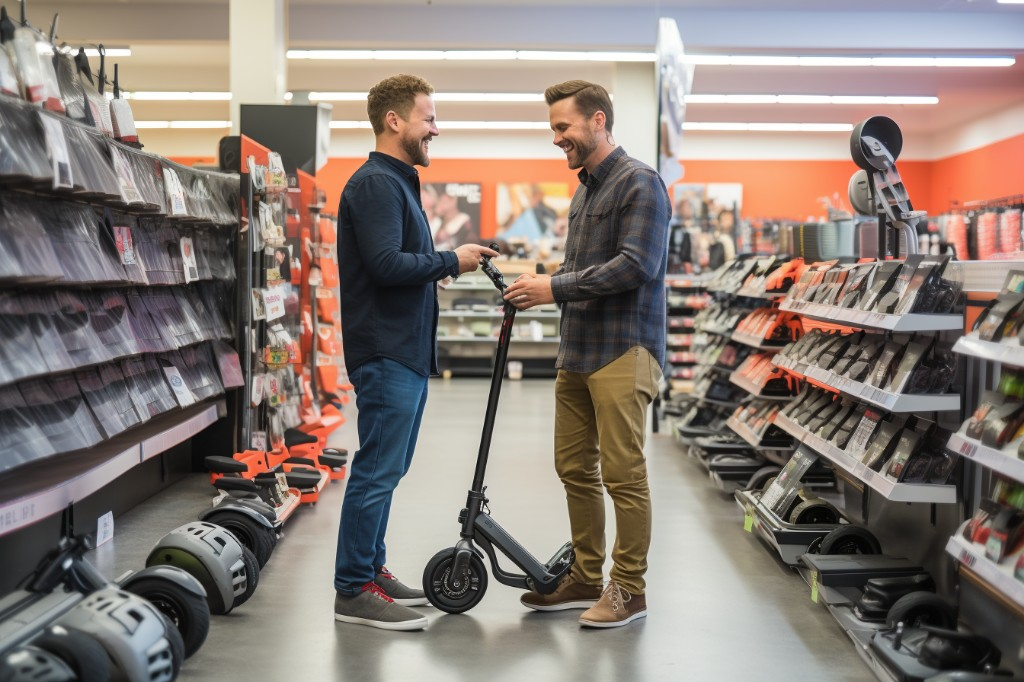
Best Electric Scooters for Heavy Adults
When it comes to electric scooters, the options are as diverse as the riders themselves. But when we’re talking about e-scooters for heavy adults, the selection tends to get a bit more specific. Just like a pair of shoes that needs to fit just right, an electric scooter must be the perfect match for its rider. Let’s dive into a review of the best options on the market.
Top Electric Scooters for Heavy Riders: A Review
In the bustling streets of cities around the world, amidst a sea of bicycles and pedestrians, electric scooters have carved out their own space. And among these zippy vehicles, some stand out for their ability to comfortably and efficiently carry heavier riders.
The first contender is the Turboant X7 Pro, which is essentially a heavy-duty e-scooter. With its robust build and a weight limit of up to 275 lbs, it has been engineered to accommodate heavier riders without compromising on speed or performance. The scooter’s durability is matched by its impressive 30-mile range, ensuring that you can go about your day without worrying about battery life.
Next up is the Segway Ninebot MAX, a scooter that has earned its stripes in the electric scooter community for its impressive 220 lbs weight capacity and 40.4-mile range. Its sturdy frame and 10-inch pneumatic tires ensure a smooth ride, even for heavier adults.
Lastly, we have the Kaabo Wolf Warrior 11. This beast of a scooter takes the cake when it comes to weight capacity. It can comfortably support riders up to 330 lbs, making it the perfect choice for those who find other scooters lacking in this department. This heavy-duty e-scooter is not just about capacity, though. Its dual motors deliver a top speed of 50 mph, and it has a range of up to 70 miles on a single charge.
These are just a few of the top electric scooters for heavy adults available in the market. Remember, when choosing a scooter, it’s not just about the weight limit. It’s also about durability, performance, and, of course, your comfort.

Where to Buy Electric Scooters for Heavy Adults
Now that you have a clearer idea about the best electric scooters for heavy adults, the next step is to get your hands on one. The good news is that these scooters are readily available, both online and in physical stores.
For those who prefer the convenience of online shopping, Amazon and eBay are excellent platforms where you can buy an electric scooter. They offer a variety of options, from the most affordable to the top-of-the-line models. You can easily compare different scooters based on their specifications, customer reviews, and prices.
If you’re more of a hands-on shopper and want to test out a scooter before making a purchase, consider visiting a local sports equipment store or an electric scooter specialty shop. These stores often have knowledgeable staff who can guide you in making the best choice based on your weight, height, and riding preferences.
Whether you’re buying online or in-store, remember to check the weight capacity of the e-scooter. After all, as a heavier adult, this is a crucial factor that can significantly affect your riding experience.
Ultimately, whether you choose the Turboant X7 Pro, Segway Ninebot MAX, Kaabo Wolf Warrior 11, or an entirely different model, remember that the best electric scooter for you is one that fits your specific needs and lifestyle.
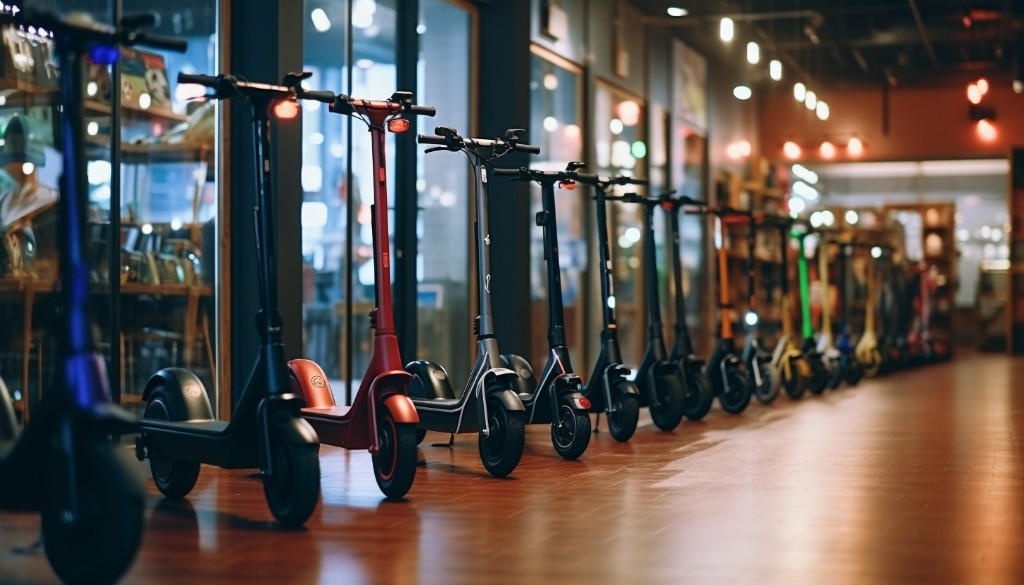
Closing Thoughts
Understanding the weight capacity and limitations of electric scooters is an essential aspect for any potential user. This significance lies in the fact that the weight limit of an e-scooter is not just a number but a key determinant of the scooter’s overall performance and longevity. Factors such as motor power, battery capacity, and frame construction all play a crucial role in determining this limit.
While heavy-duty e-scooters may accommodate heavier loads, they come with their own set of advantages and disadvantages that need to be weighed carefully. Exceeding the weight limit on electric scooters can lead to dire consequences, including reduced performance, potential damage, and safety risks. However, there are various e-scooters available in the market specifically designed for heavy adults, offering them a comfortable and safe ride.
It’s essential to respect these weight limitations and select an electric scooter that suits your individual needs, thereby ensuring a pleasant and hassle-free commuting experience. Happy scooting!
Frequently Asked Questions
What is the average weight limit for an electric scooter?
The average weight limit for an electric scooter typically falls between 220-265 lbs (100-120 kg). However, this can vary greatly depending on the model and make of the scooter.
How does the weight limit affect the performance of an electric scooter?
The weight limit directly impacts an electric scooter’s performance. If a rider exceeds the specified weight limit, it can result in slower speeds, reduced battery life, and increased wear and tear on the scooter’s components.
Can I use an electric scooter if I exceed the weight limit?
While you technically can use an electric scooter if you exceed its weight limit, it’s not recommended. Doing so can cause damage to the E-Scooter, reduce its lifespan, and even pose safety risks.
What are some good electric scooters for heavy adults?
There are several models designed specifically for heavier adults, including the EMove Cruiser, Turboant X7 Pro, and the Apollo Pro, all known for their sturdy construction and higher weight capacities.
What happens if I exceed the weight limit on my electric scooter?
Exceeding the weight limit on your electric scooter can result in a range of issues, from reduced speed and battery life to potential damage to the scooter’s frame. In severe cases, it could even lead to accidents due to the inability of the E-Scooter to handle the excess load.

